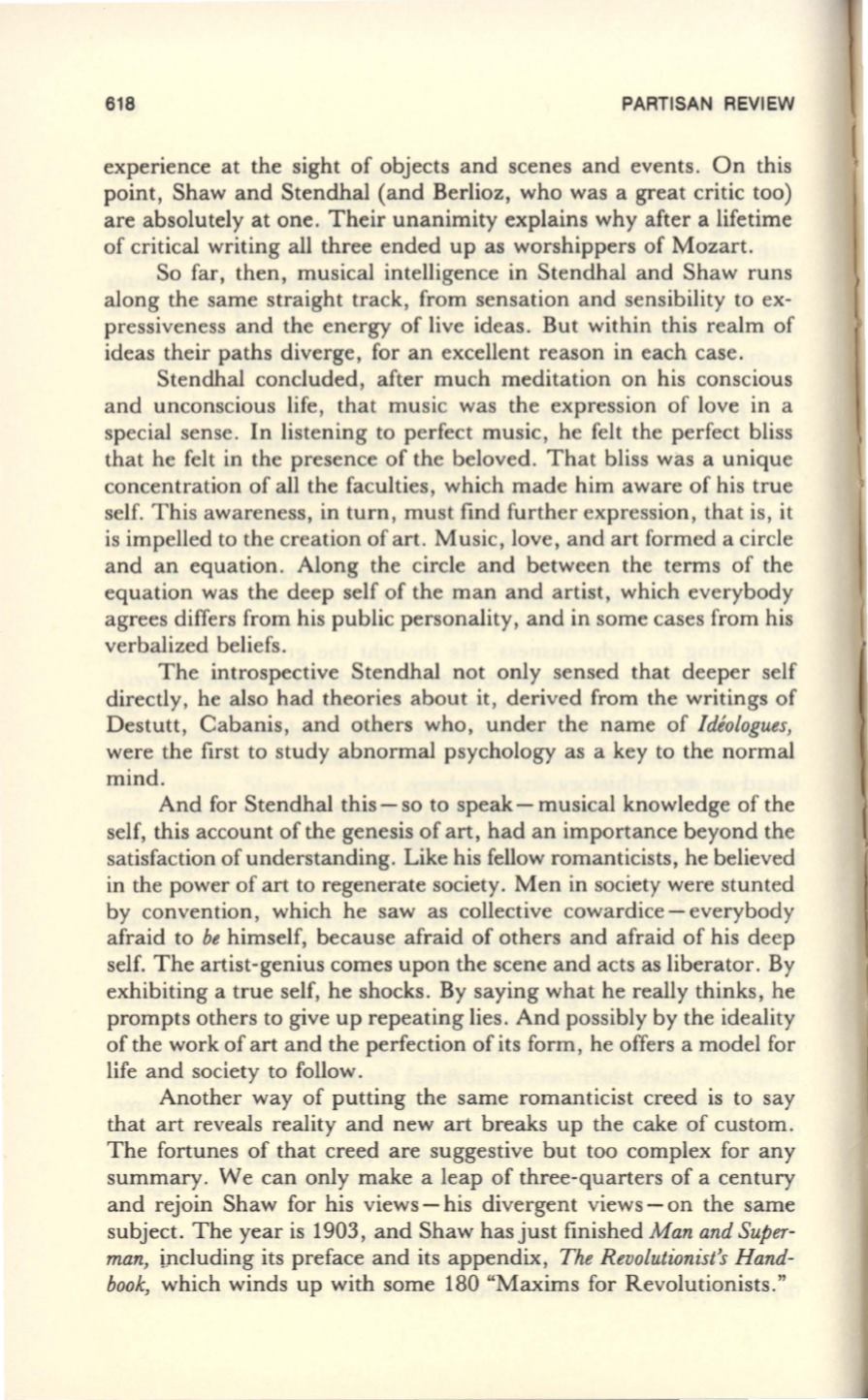
618
PARTISAN REVIEW
experience at the sight of objects and scenes and events. On this
point, Shaw and Stendhal (and Berlioz, who was a great critic too)
are absolutely at one . Their unanimity explains why after a lifetime
of critical writing all three ended up as worshippers of Mozart.
So far, then, musical intelligence in Stendhal and Shaw runs
along the same straight track , from sensation and sensibility to ex–
pressiveness and the energy of live ideas. But within this realm of
ideas their paths diverge, for an excellent reason in each case.
Stendhal concluded, after much meditation on his conscious
and unconscious life, that music was the expression of love in a
special sense. In listening to perfect music , he felt the perfect bliss
that he felt in the presence of the beloved. That bliss was a unique
concentration of all the faculties, which made him aware of his true
self. This awareness , in turn, must find further expression, that is, it
is impelled to the creation of art . Music, love, and art formed a circle
and an equation . Along the circle and between the terms of the
equation was the deep self of the man and artist, which everybody
agrees differs from his public personality, and in some cases from his
verbalized beliefs.
The introspective Stendhal not only sensed that deeper self
directly, he also had theories about it, derived from the writings of
Destutt, Cabanis, and others who, under the name of
Ideologues,
were the first to study abnormal psychology as a key to the normal
mind.
And for Stendhal this- so to speak- musical knowledge of the
self, this account of the genesis of art, had an importance beyond the
satisfaction of understanding. Like his fellow romanticists, he believed
in the power of art to regenerate society. Men in society were stunted
by convention, which he saw as collective cowardice-everybody
afraid to
be
himself, because afraid of others and afraid of his deep
self. The artist-genius comes upon the scene and acts as liberator. By
exhibiting a true self, he shocks. By saying what he really thinks , he
prompts others to give up repeating lies. And possibly by the ideality
of the work of art and the perfection of its form, he offers a model for
life and society to follow.
Another way of putting the same romanticist creed is to say
that art reveals reality and new art breaks up the cake of custom .
The fortunes of that creed are suggestive but too complex for any
summary. We can only make a leap of three-quarters of a century
and rejoin Shaw for his views- his divergent views- on the same
subject . The year is 1903, and Shaw has just finished
Man and Super–
man,
including its preface and its appendix,
The Revolutionist's Hand–
book,
which winds up with some 180 "Maxims for Revolutionists ."


